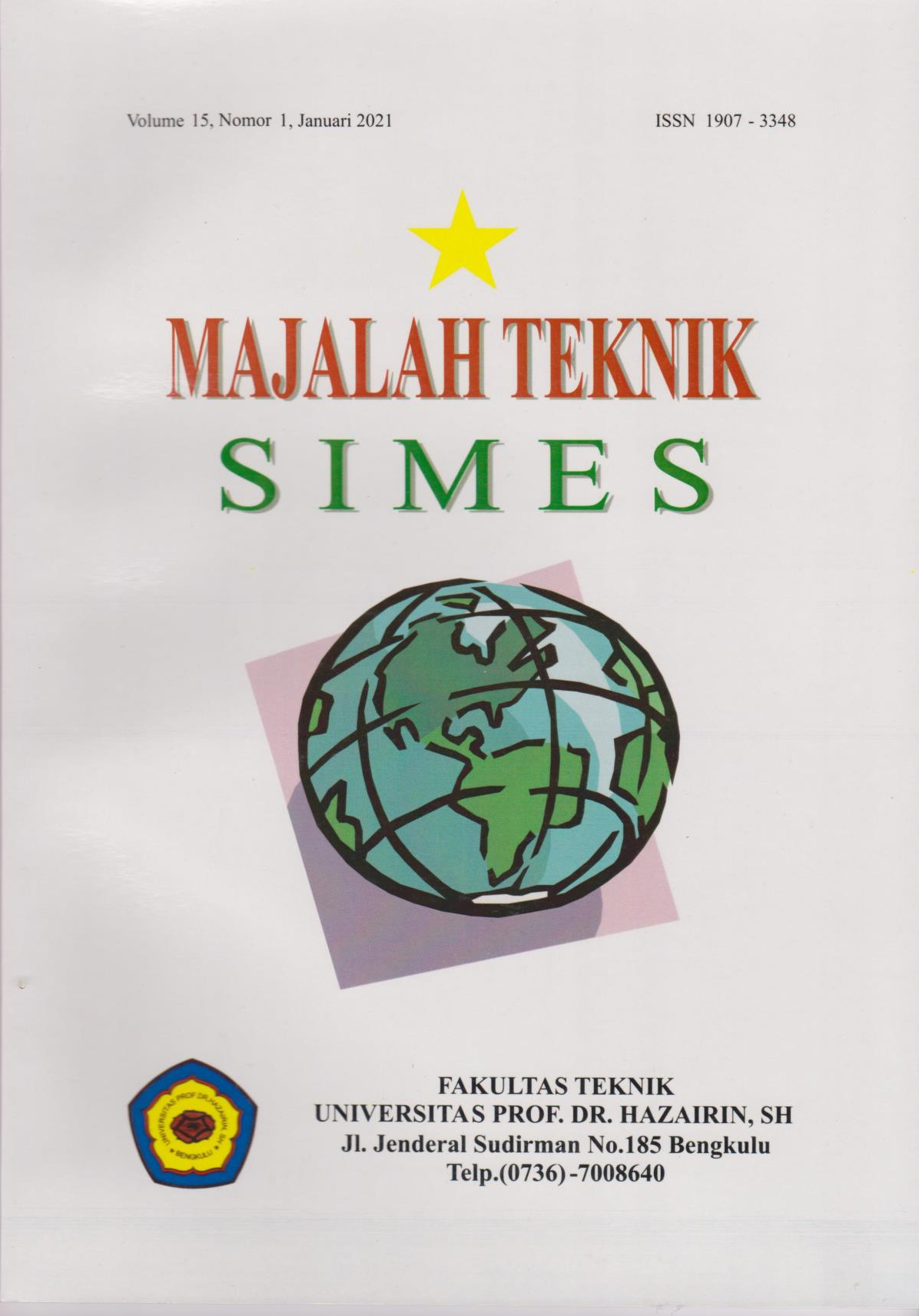Perencanaan Bangunan Pengaman Pantai Pada Daerah Pantai Pekik Nyaring Kabupaten Bengkulu Tengah
DOI:
https://doi.org/10.32663/simes.v15i1.1718Keywords:
Safety, Beach, Waves, Data, BMKGAbstract
Abstract
The purpose of this study is to evaluate the wave height, maximum wind direction, and water level elevation and to design the dimensions of coastal safety buildings with wave conditions in the research location. The research method used is descriptive, quantitative, and searches for all necessary data derived from field study data and literature study data consisting of primary data and secondary data. After calculating, it is found that the largest breaking wave height is the result of the calculation of data obtained from BMKG, namely 1.77 meters, while the height of the breaking wave obtained by direct observation is 1.34 meters, so that the height of the breaking wave used in this study is the result. calculations from BMKG data. Based on data from BMKG, the maximum wind speed data for the last 5 years obtained the percentage of dominant wind speed, namely from the West with a total percentage of 58.33%, and the smallest wind speed that is from the North with a total percentage of 1.67. %, the design water level elevation is 2.1 meters and the top elevation of the coastal protection building is 4,877 meters. The weight of the protective layer for the head of the coast guard is 0.5 ton, the weight of the core of the beach is 50 kilograms, with a thickness of 1.5 meters of protection layer, and the width of the top of the head of the beach protection building is 2 meters while the weight of the layer The protection for the part of the beach protection arm is 1.51 tons, the weight of the core stone is 151 kilograms, with a thickness of 2 meters, and a width of the top of the armored beach guard building is 3 meters. The grain weight of the beach safety leg at the head W = 0.103 tons, with a width of 5 meters and a height of 1 meter for the head of the beach safety leg. The number of layers of protection per 10 m2 N for the head of the coast guard = 45 pieces and the number of layers per 10 m2 of N for the part of the coast guard = 22. Based on these results it can be concluded that the BMKG data is not always the same as the field data.
References













